lenmac65
Silver Member
- Jul 28, 2009
- 2,704
- 8,530
- 🥇 Banner finds
- 3
- Detector(s) used
- Garrett AT Pro, Equinox 800 (as of 10/2019)
- Primary Interest:
- Metal Detecting
I dug these two odd objects from the same hole at a pre 1850s homesite. One item has the barrel of a skeleton key, but the end does not look like any door key I have seen. Perhaps it is a lantern part? The knob item is interesting, as it has two bands of alternating X’s and O’s with a flower pattern in the middle. It is hollow and does not seem to have any threading. Perhaps a dresser knob? Any ideas would be appreciated. Thanks!
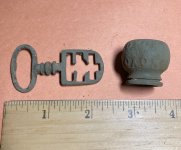
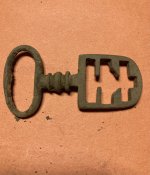
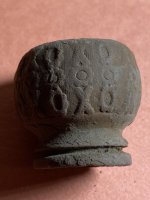
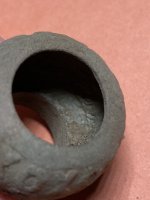
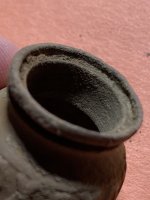





Last edited:





